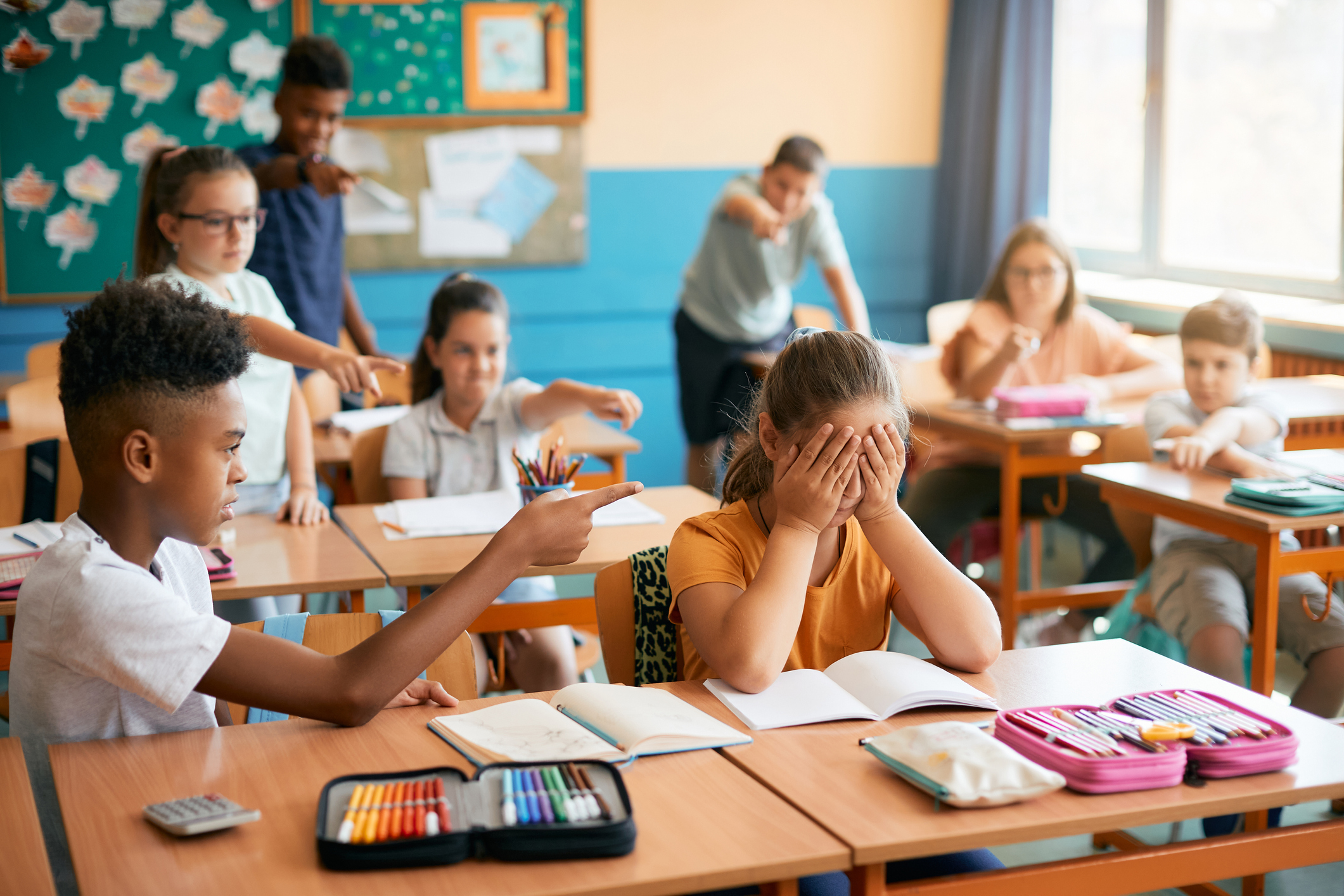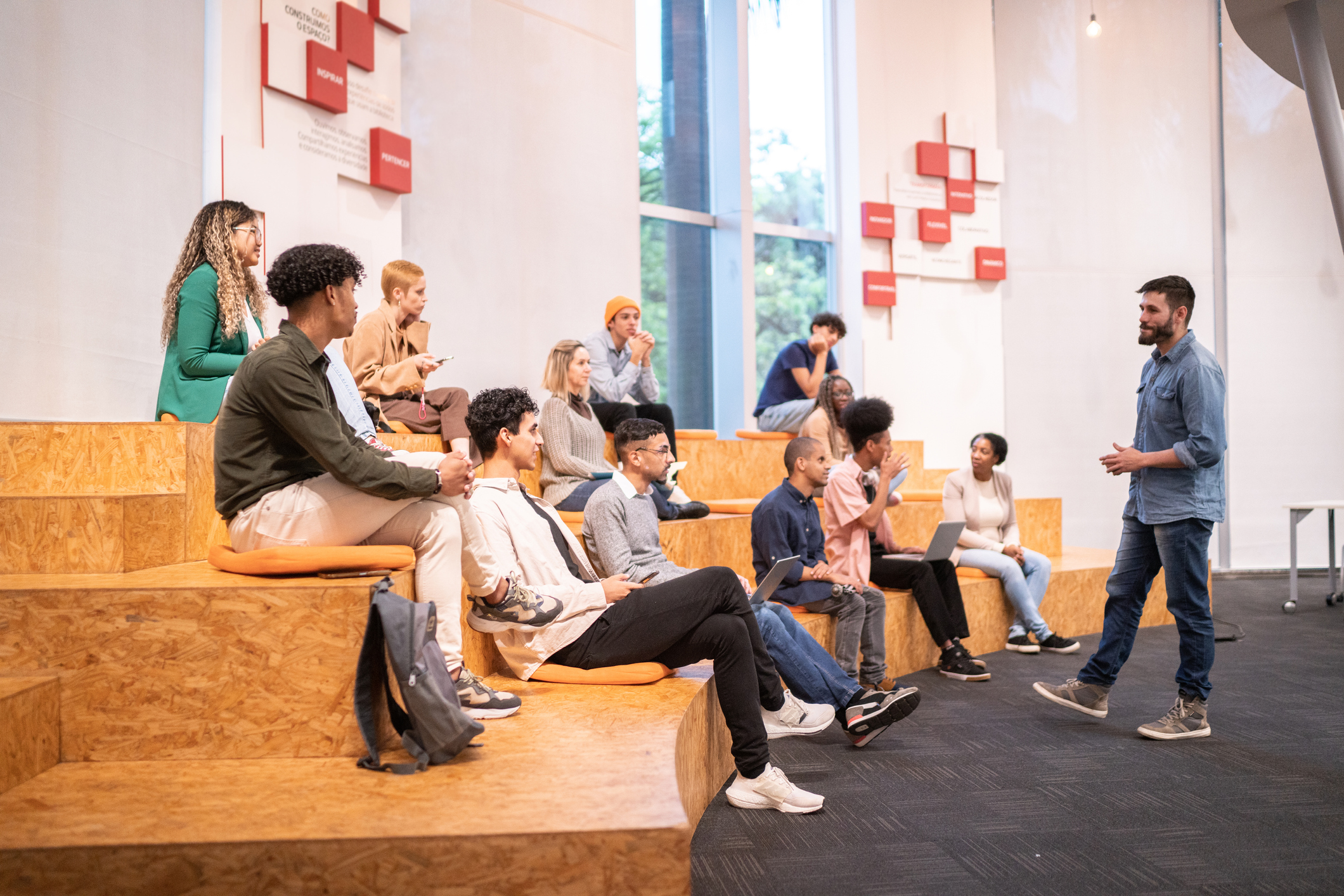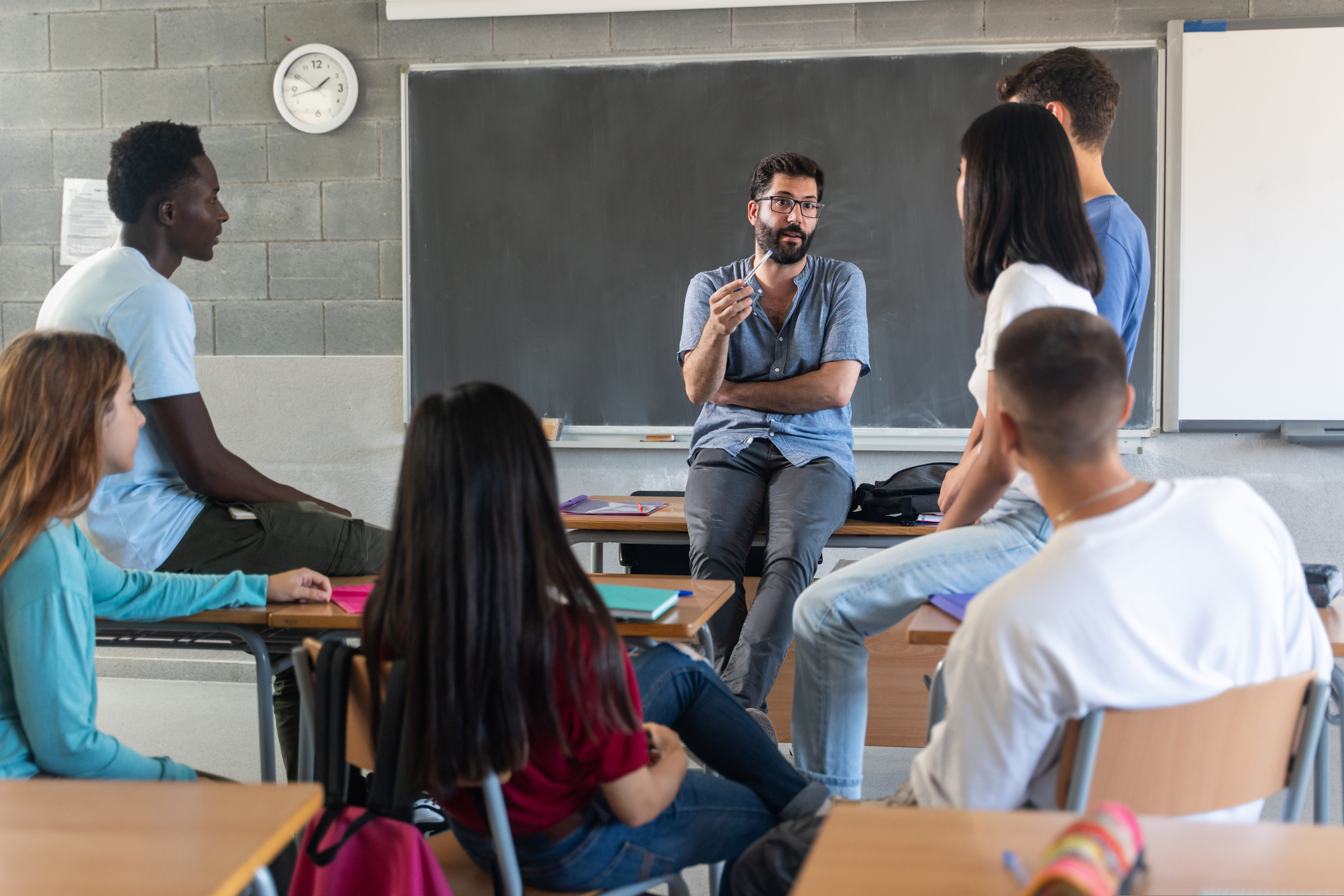sWelcome to our blog post on the role of relationships in trauma-informed teaching. As educators, we have a profound impact on the lives of our students, particularly those who have experienced trauma. Creating a safe and supportive learning environment is crucial for their healing and academic success. One of the key elements in trauma-informed teaching is building trust and connection with our students.
In this blog post, we will explore why trust is crucial in a trauma-informed classroom and discuss strategies to build trust with our students. We will also delve into the importance of fostering connection among students and the impact it has on their healing and learning process. Additionally, we will examine the significance of teacher-student relationships and provide tips on developing strong connections with students. Lastly, we will address the challenges that educators face in implementing trauma-informed teaching and offer solutions and resources to overcome these obstacles.
Through case studies and practical advice, we aim to equip educators with the knowledge and tools needed to create a trauma-informed classroom that promotes trust, connection, and ultimately, student success. Join us on this journey as we explore the power of relationships in trauma-informed teaching.
Understanding Trauma-Informed Teaching: An Introduction
Trauma-informed teaching is an approach that recognises the prevalence of trauma in students’ lives and seeks to create an environment that supports their healing and growth. It acknowledges that trauma can have a significant impact on a student’s ability to learn, regulate emotions, and engage in positive social interactions.
To understand trauma-informed teaching, it is important to first define trauma. Trauma refers to experiences that are deeply distressing or disturbing, often resulting from events such as abuse, neglect, violence, loss, or natural disasters. These traumatic experiences can have lasting effects on a person’s physical, emotional, and psychological well-being.
In a trauma-informed classroom, educators prioritise safety, trust, and connection, creating an environment that is sensitive to the unique needs of students who have experienced trauma. This approach recognises that trauma can affect students’ behaviour, learning abilities, and overall academic performance.
By adopting trauma-informed teaching practices, educators can better support students in their healing process and provide them with the tools they need to thrive academically and emotionally. It is important to note that trauma-informed teaching is not a one-size-fits-all approach but rather a framework that can be adapted to meet the specific needs of each student.
In the following sections, we will explore the crucial role of building trust and connection in a trauma-informed classroom, the impact of relationships on students’ well-being, and practical strategies for educators to implement in their classrooms. Let’s dive deeper into the importance of building trust in a trauma-informed classroom.
The Importance of Building Trust in a Trauma-Informed Classroom
In a trauma-informed classroom, building trust is a fundamental and essential aspect of creating a safe and supportive learning environment. The trust serves as a foundation for students to feel secure, valued, and respected, enabling them to engage fully in their educational journey. Let’s explore why trust is crucial in a trauma-informed classroom and how it contributes to students’ overall well-being and academic success.
1. Why Trust is Crucial for Trauma-Informed Teaching
Building trust is of utmost importance in a trauma-informed classroom due to the following reasons:
a. Safety and Emotional Regulation
For students who have experienced trauma, feeling safe is paramount. When students trust their teachers and peers, they are more likely to feel secure in sharing their thoughts, emotions, and experiences. This sense of safety promotes emotional regulation, allowing students to manage their feelings and engage in learning effectively.
b. Relationship Building
Trust serves as a solid foundation for building positive relationships between teachers and students. When students trust their educators, they are more likely to seek support, ask questions, and seek guidance when needed. Positive relationships foster a sense of belonging and connectedness, which are essential for students to thrive academically and emotionally.
c. Risk-Taking and Learning
In a trusting classroom environment, students feel comfortable taking risks and making mistakes. They know that their teachers and peers will support them through challenges, which encourages them to explore new ideas, engage in critical thinking, and embrace a growth mindset. Trust empowers students to become active participants in their learning journey.
2. Strategies to Build Trust with Students
Building trust with students requires intentional effort and a commitment to creating a safe and nurturing environment. Here are some strategies that educators can employ to foster trust in their trauma-informed classrooms:
a. Establish Clear Expectations and Boundaries
Setting clear expectations and boundaries helps create a predictable and structured environment, which is essential for students who have experienced trauma. Communicate behavioural expectations, academic goals, and classroom rules to ensure that students understand what is expected of them.
b. Create a Safe Physical and Emotional Space
Ensure that the classroom environment is physically safe, inviting, and conducive to learning. Provide spaces where students can retreat if they need a moment to themselves or feel overwhelmed. Additionally, creates opportunities for students to express their emotions and thoughts in a safe and non-judgmental manner.
c. Foster Positive and Supportive Communication
Encourage open and respectful communication in the classroom. Listen actively to students, validate their experiences, and respond empathetically. Create opportunities for students to share their perspectives, ideas, and concerns, and ensure that their voices are heard and valued.
d. Be Consistent and Reliable
Consistency and reliability are crucial in building trust. Be consistent in your words and actions, follow through with promises and commitments, and be reliable in your support for students. Consistency helps students feel secure and builds their confidence in your ability to provide a safe and supportive learning environment.
e. Cultivate a Strengths-Based Approach
Recognize and celebrate the strengths and accomplishments of your students. Adopt a strengths-based approach that focuses on their resilience, abilities, and potential. By highlighting their strengths, you foster a positive and empowering classroom culture that contributes to building trust.
3. Overcoming Barriers in Trust Building
Building trust in a trauma-informed classroom can be challenging, as students may have experienced significant betrayal or broken trust in the past. It is essential to understand and address the barriers that may impede the trust-building process, such as:
a. Fear and Mistrust
Students who have experienced trauma may initially approach relationships with fear and mistrust. They may be hesitant to open up or trust others due to past experiences. Educators must be patient, understanding, and empathetic, allowing students to gradually develop trust at their own pace.
b. Cultural Sensitivity
Different cultural backgrounds may influence students’ attitudes towards trust and relationships. Educators should be sensitive to cultural differences and adapt their approaches accordingly. Building cultural competence and engaging in culturally responsive teaching practices can help overcome cultural barriers to trust building.
c. Trauma Triggers
Certain classroom activities or interactions may inadvertently trigger traumatic memories or responses in students. Educators should be mindful of potential triggers and take proactive steps to minimize their impact. Creating a trauma-informed classroom that prioritises emotional safety and provides coping strategies can help students navigate and manage their triggers effectively.
d. Building Trust with Resistant Students
Some students may display resistance or reluctance to trust others due to their past experiences. Educators must approach these students with patience, empathy, and consistency. Building trust with resistant students may require additional support from school counsellors, trauma specialists, or other professionals who can provide guidance and strategies to foster trust.
In the next section, we will explore the significance of fostering connection in a trauma-informed classroom and discuss methods to promote meaningful connections among students.
Fostering Connection in a Trauma-Informed Classroom
Creating a sense of connection among students is a vital component of a trauma-informed classroom. Fostering connection helps to build a supportive community where students feel valued, understood, and empowered. In this section, we will explore the role of connection in healing and learning, methods to foster connection among students, and the impact of strong connections on student performance.
1. The Role of Connection in Healing and Learning
Connection plays a significant role in the healing and learning process of students who have experienced trauma. Here are some key aspects of the role of connection:
a. Emotional Support
Connection provides students with emotional support, allowing them to express their feelings, fears, and anxieties. When students feel connected to their peers and teachers, they are more likely to seek and receive the support they need to navigate their trauma and build resilience.
b. Sense of Belonging
Building connections in the classroom nurtures a sense of belonging for students. When students feel a sense of belonging, they are more likely to engage actively in the learning process, take risks, and contribute to the classroom community. A strong sense of belonging contributes to students’ overall well-being and academic success.
c. Validation and Empathy
Connection fosters an environment of validation and empathy where students feel heard and understood. By validating their experiences and demonstrating empathy, educators create a safe space for students to process their trauma and develop a positive self-image.
2. Methods to Foster Connection Among Students
Creating opportunities for connection in a trauma-informed classroom requires intentional strategies and activities. Here are some methods educators can employ to foster connection among students:
a. Icebreaker Activities
Begin the school year or each class session with icebreaker activities that encourage students to get to know each other better. These activities can be fun and interactive, allowing students to share personal interests, experiences, or goals. Icebreaker activities promote a sense of camaraderie and create a foundation for building connections.
b. Cooperative Learning
Incorporate cooperative learning activities into classroom instruction, where students work together in small groups to tackle assignments or projects. This collaborative approach promotes teamwork, communication, and interpersonal skills, fostering connections among students as they learn from and support each other.
c. Class Meetings and Circles
Hold regular class meetings or circles where students have the opportunity to discuss topics, share their thoughts and feelings, and problem-solve together. These meetings provide a platform for open and respectful communication, allowing students to connect on a deeper level and develop empathy for one another.
d. Peer Mentoring or Buddy Systems
Implement a peer mentoring or buddy system, where older students are paired with younger students or students with similar interests or experiences. This mentorship fosters connections between peers, promotes peer support, and creates a sense of community within the classroom.
e. Service-Learning Projects
Engage students in service-learning projects that involve giving back to the community or addressing social issues. Working together towards a common goal outside of the classroom fosters connections among students, as they collaborate, problem-solve, and make a positive impact on their surroundings.
3. The Impact of Strong Connections on Student Performance
Strong connections in a trauma-informed classroom have a profound impact on student’s academic performance and overall well-being. Here are some ways in which strong connections positively influence students:
a. Increased Motivation and Engagement
When students feel connected to their peers and teachers, they are more motivated to participate actively in the learning process. They feel a sense of ownership and responsibility for their education, leading to increased engagement and a willingness to take on academic challenges.
b. Improved Social and Emotional Skills
Strong connections contribute to the development of social and emotional skills in students. Through positive interactions with peers, they learn effective communication, conflict resolution, empathy, and collaboration. These skills enhance their ability to navigate relationships and positively impact their social and emotional well-being.
c. Enhanced Academic Support
In a connected classroom environment, students are more likely to seek and receive academic support from their peers. Collaboration and peer learning become natural components of the learning process. Students feel comfortable asking for help and offering assistance to their classmates, creating a supportive academic community.
d. Increased Resilience and Self-Efficacy
Strong connections provide a source of resilience and support for students who have experienced trauma. They develop a sense of self-efficacy, knowing that they have a network of individuals who believe in their abilities and are there to support them through challenges. This resilience contributes to their ability to overcome obstacles and succeed academically.
In the following section, we will explore the importance of teacher-student relationships in a trauma-informed classroom and provide tips on how to develop strong connections with students.
The Role of Relationships in a Trauma-Informed Classroom
In a trauma-informed classroom, relationships play a critical role in creating a supportive and healing environment for students. The connections between teachers, students, and peers can have a profound impact on students’ well-being, academic performance, and overall success. In this section, we will explore the importance of teacher-student relationships, how to develop strong connections with students, and the influence of peer relationships in a trauma-informed classroom.
1. The Importance of Teacher-Student Relationships
Teacher-student relationships are the foundation of a trauma-informed classroom. Here’s why these relationships are crucial:
a. Emotional Support and Validation
Strong teacher-student relationships provide students with emotional support, validation, and a sense of security. Students who have experienced trauma often require additional support to navigate their emotions and build resilience. Trusting relationships with teachers can help them feel understood, valued, and cared for.
b. Academic Guidance and Support
Teachers who have positive relationships with their students can better understand their individual needs, strengths, and challenges. This understanding allows teachers to provide personalised academic guidance, support, and accommodations, which are essential for students who have experienced trauma and may require additional assistance.
c. Modeling Healthy Relationships
Teacher-student relationships serve as models for healthy interpersonal connections. Students observe and learn from the ways their teachers engage with them and with others. Positive relationships with teachers can help students develop social skills, empathy, and the ability to form healthy relationships with their peers.
2. How to Develop Strong Relationships with Students
Building strong relationships with students in a trauma-informed classroom requires intentional effort and a student-centred approach. Here are some strategies to develop strong connections with students:
a. Show Genuine Care and Interest
Demonstrate genuine care and interest in each student as an individual. Take the time to learn about their interests, hobbies, and personal experiences. Engage in conversations that show you value and appreciate their uniqueness. This genuine care builds trust and strengthens the teacher-student relationship.
b. Practice Active Listening
Be an active listener when students share their thoughts, concerns, or experiences. Give them your undivided attention, maintain eye contact, and respond empathetically. Reflect on what they have shared to show that you have heard and understood them. Active listening builds trust and fosters open communication.
c. Provide Support and Encouragement
Offer support and encouragement to students in their academic and personal journeys. Recognise
se their achievements, both big and small, and provide constructive feedback to help them grow. Be available for guidance and assistance, showing them that you are invested in their success.
d. Create Opportunities for Student Voice and Choice
Empower students by giving them choices and opportunities to express their opinions, ideas, and preferences. Incorporate student voice in decision-making processes within the classroom. When students feel heard and valued, their sense of agency and ownership over their learning increases, strengthening the teacher-student relationship.
e. Be Consistent and Reliable
Consistency and reliability are essential in building strong relationships with students. Be consistent in your expectations, rules, and consequences. Follow through with your commitments and promises. Students need to feel that they can rely on you for support, guidance, and stability.
3. The Influence of Peer Relationships on Trauma-Informed Teaching
In addition to teacher-student relationships, peer relationships also play a significant role in a trauma-informed classroom. Here’s how peer relationships influence trauma-informed teaching:
a. Social Support and Connection
Positive peer relationships provide social support and connection for students who have experienced trauma. When students feel accepted and supported by their peers, they are more likely to feel a sense of belonging and develop a positive self-image. Peer relationships can be a source of comfort and understanding.
b. Peer Learning and Modeling
Peer relationships offer opportunities for peer learning and modelling. Students can learn from and support each other academically, socially, and emotionally. Collaborative activities and group projects enable students to share knowledge, skills, and perspectives, fostering a sense of camaraderie and cooperation.
c. Conflict Resolution and Communication Skills
Navigating peer relationships also helps students develop conflict resolution and communication skills. Through interactions with their peers, students learn how to express their needs, resolve conflicts, and cultivate empathy. These skills are crucial for building healthy relationships and effectively navigating social situations.
In the next section, we will explore the challenges faced by educators in implementing trauma-informed teaching and provide solutions and resources to overcome these obstacles.
Challenges and Solutions in Implementing Trauma-Informed Teaching
Implementing trauma-informed teaching can come with its own set of challenges. Educators may encounter various obstacles that hinder the successful implementation of this approach. In this section, we will explore some common challenges faced by educators and provide solutions and resources to overcome these obstacles.
1. Common Obstacles in Trauma-Informed Teaching
a. Limited Awareness and Understanding
One of the primary challenges in implementing trauma-informed teaching is the lack of awareness and understanding among educators. Many educators may not have received adequate training or professional development on trauma-informed practices, which can hinder their ability to effectively support students who have experienced trauma.
b. Time Constraints and Workload
Educators often face time constraints and heavy workloads, making it difficult to allocate sufficient time and resources to trauma-informed practices. The implementation of trauma-informed teaching requires additional planning, collaboration, and support, which may be challenging within the constraints of a busy academic schedule.
c. Resistance to Change
Resistance to change can be a significant obstacle in implementing trauma-informed teaching. Educators may face resistance from colleagues, administrators, or even parents who are unfamiliar with or sceptical of trauma-informed approaches. Overcoming this resistance requires effective communication, sharing of research and evidence, and fostering a culture of openness and collaboration.
2. Solutions and Resources for Trauma-Informed Educators
a. Professional Development and Training
To address the challenge of limited awareness and understanding, educators should seek out professional development opportunities and training programs focused on trauma-informed teaching. These resources can provide educators with the knowledge, skills, and strategies needed to effectively support students who have experienced trauma.
b. Collaboration and Support Networks
Building a strong support network of colleagues, administrators, and mental health professionals is crucial in implementing trauma-informed teaching. Collaborate with other educators to share experiences, resources, and best practices. Seek support from administrators who can allocate resources and create a supportive school culture.
c. Trauma-Informed School Policies and Practices
Advocate for the development and implementation of trauma-informed school policies and practices. Collaborate with administrators and school leadership to integrate trauma-informed approaches into the school’s framework, including policies on discipline, student support services, and professional development opportunities for educators.
d. Self-care and Wellness
Educators must prioritise self-care and wellness to effectively support students who have experienced trauma. Engage in regular self-care practices, such as mindfulness, exercise, and seeking support from colleagues or mental health professionals. Taking care of your well-being ensures that you can provide the necessary support to your students.
e. Engaging Families and Communities
Involve families and communities in the trauma-informed approach. Educate parents and guardians about trauma and its impact on learning. Foster partnerships with community organisations and mental health professionals to provide additional resources and support to students and families.
Conclusion
Implementing trauma-informed teaching may present challenges, but with the right strategies, resources, and support, educators can overcome these obstacles. By raising awareness, investing in professional development, and building strong support networks, educators can create trauma-informed classrooms that promote healing, connection, and academic success for all students. Remember, every step taken towards trauma-informed teaching contributes to the well-being and growth of students who have experienced trauma.
Related posts:
 8 Top Tips for Using Dan Hughes’ PACE in the Classroom with Pupils Who Have a Lived Experience of Trauma and Unmet Attachment Needs
8 Top Tips for Using Dan Hughes’ PACE in the Classroom with Pupils Who Have a Lived Experience of Trauma and Unmet Attachment Needs
 Empowering Students’ Voices: Promoting Agency and Resilience in Trauma-Informed Classrooms
Empowering Students’ Voices: Promoting Agency and Resilience in Trauma-Informed Classrooms
 Promoting Self-Care for Teachers: Supporting Wellbeing in Trauma-Informed Classrooms
Promoting Self-Care for Teachers: Supporting Wellbeing in Trauma-Informed Classrooms
 A Teacher’s Guide to Trauma-Informed Classrooms
A Teacher’s Guide to Trauma-Informed Classrooms



